Orange Collective

“Sensing Mandarin Oranges – an Entangled World”Reflections on Kinan Art Week 2023
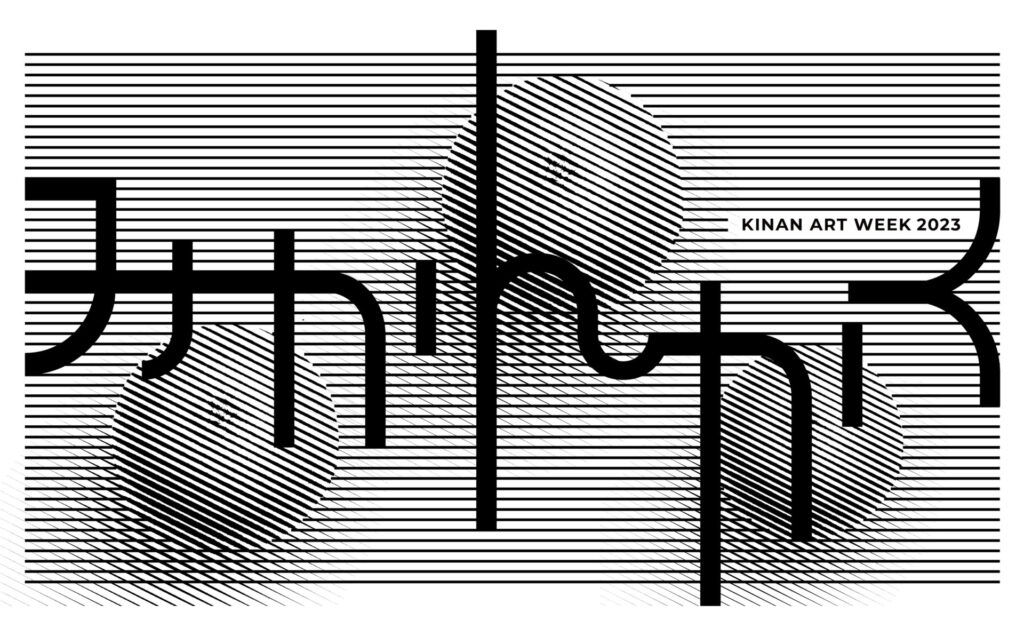
Beyond “exhibitions” that are seen with the “eye”, to art projects that are experienced through the senses of touch and taste.
Reflections on Kinan Art Week 2023 ‘Mikankaku’ exhibition.
Following the exhibition ‘Mikan Mandala‘ (2022), we are developing the art project ‘Mikan Collective’ on the theme of citrus, a local resource in the Kinan region of Wakayama Prefecture. This activity creates opportunities for farmers, artists, designers, curators and researchers to think about and collaborate on citrus.
This activity became the basis for the 2023 project, which took place over a three-week period from 7 (Sat) to 22 (Sun) October (including the art residency period) at several locations in Tanabe City and Shirahama Town, Wakayama Prefecture, with workshops as the main focus.
‘Mikankaku‘ is a word created by combining the words mikan (tangerine, unfinished…) and kansei (sense, interval…), with the aim of carefully unravelling the various human senses, especially those other than sight.
It is said that 90% of the information humans obtain relies on visual information, and art is also considered to be largely visual expression. This year’s exhibition was not a general ‘exhibition’ of artworks, but focused on workshops that appealed to the senses of smell, taste and touch, as well as the sense of time.
Reference:
‘Mikan Mandala’ exhibition(2022) Implementation report: https://kinan-art.jp/en/info/11694/
‘Mikankaku’ exhibition(2023), exhibition notice: https://kinan-art.jp/en/info/13896/
‘Unfinished oranges – Imagining ‘Mikankaku”.’https://kinan-art.jp/en/info/14409/
Workshops that mobilise all our senses of smell, touch and taste, interaction with people who are close to us but of whom we are unaware, and the difficulty of preserving for the future the things we take for granted in our mouths.
Misalignments in the senses and unconscious intervals that are right beside our casual everyday life. The exhibition probably required more ‘imagination’ than the usual art appreciation in order to notice and think about these things.
It was a rich time of discovery and fruitfulness for us at Kinan Art Week, as we were able to use our varied imaginations together with the participants while eating mandarin oranges, which are familiar to us here in the Kinan region, and sometimes in the citrus groves.
Events that took place during the exhibition period at several venues can be viewed below.
In addition, scroll down to read each review contribution by the people involved.
We invite you to experience the ‘unfinished’ sensations/intervals found by artists, researchers and farmers using ‘oranges’ as a starting point.
■Saturday 14 and Sunday 15 October
Film Screening of “Blind Mr, Shiratori Goes to See Art” and “Le mani toccano il mondo”.
Venue : Nongkron
Event overview : https://kinan-art.jp/en/info/14164/
As an introduction to the ‘Mikankaku’ exhibition, we asked how blind people view art. Two films were screened from Japan and Italy, respectively, depicting visually impaired people’s experience of art.
Both films were shown in a universal screening format with audio guidance and subtitles, and visually impaired people living in Kinan were also able to watch the films and experience how visually impaired people watch films at the same time.
Other events at the venue include a small marché, blind target shooting, ring toss and other play facilities, an installation work by AWAYA “Sound Torus of Mikan and People (2022)”, in which visitors can feel the sounds that oranges usually hear through the orange trees, an exhibition of “Kumanoji Karuta” by local artist Asae Sugimoto (Café Runta), and a touching painting exhibition and workshop by Tanomeri Artwork, attempted to relive the world ‘seen’ by blind people from a variety of angles.
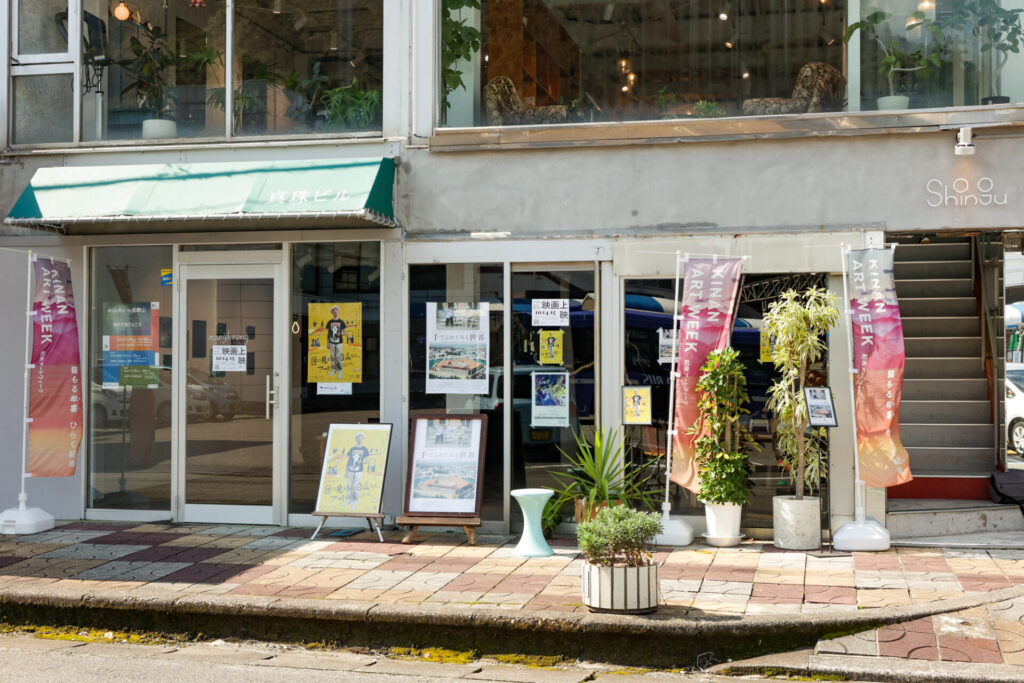

Scenes from screenings
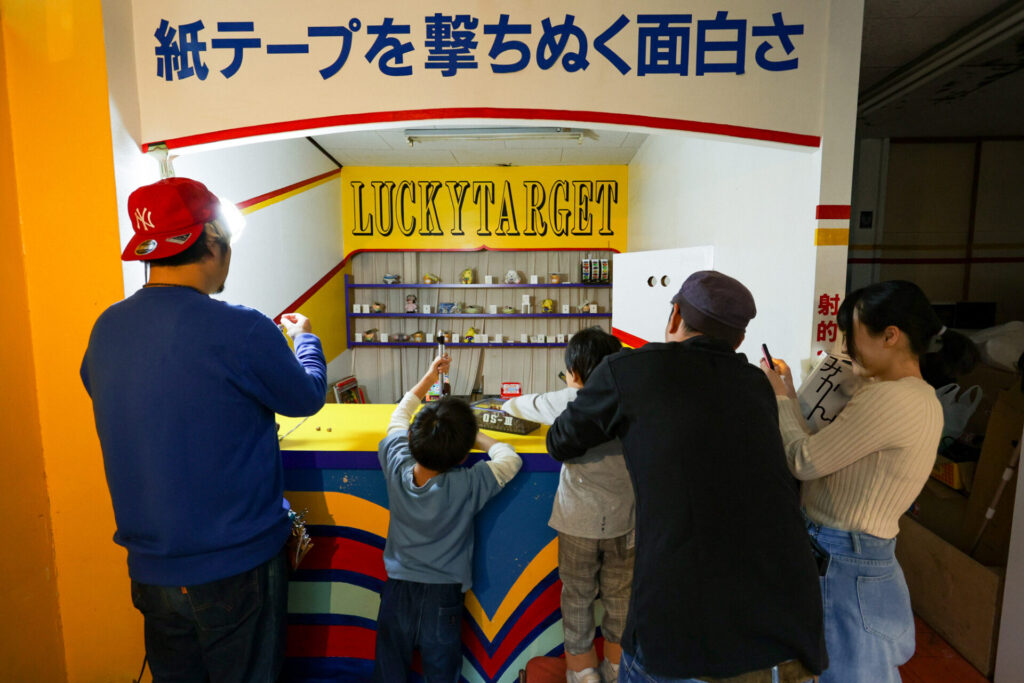

Blind shooting




View of events
■Sunday 15 October.
Let’s make chai with Indian spices, Vietnamese herbs and Wakayama oranges!
Venue : the CUE
Event overview : https://kinan-art.jp/en/info/13844/
Workshops were held to make original chai, a traditional Indian beverage, crossed with Vietnamese herbs and Wakayama oranges.
The instructors were Mari Rawanchaikhul, who has roots in India and Thailand, and guest Vietnamese artist Tuan Mami, who taught the participants basic knowledge of spices and herbs, as well as the cultural background of these herbs, and they worked in groups to create original blended chai using their sense of smell and taste. The guests enjoyed working in groups to create their own original blended chai based on their sense of smell and taste.
Creating a single chai from a large number of ingredients in accordance with a number of predetermined themes must have been a deeply enjoyable collaborative process, in which images with different tastes, aromas and other individual sensations were gradually twisted together and the overlapping parts of each person’s senses were slowly simmered out. The project was a deeply enjoyable collaborative process.
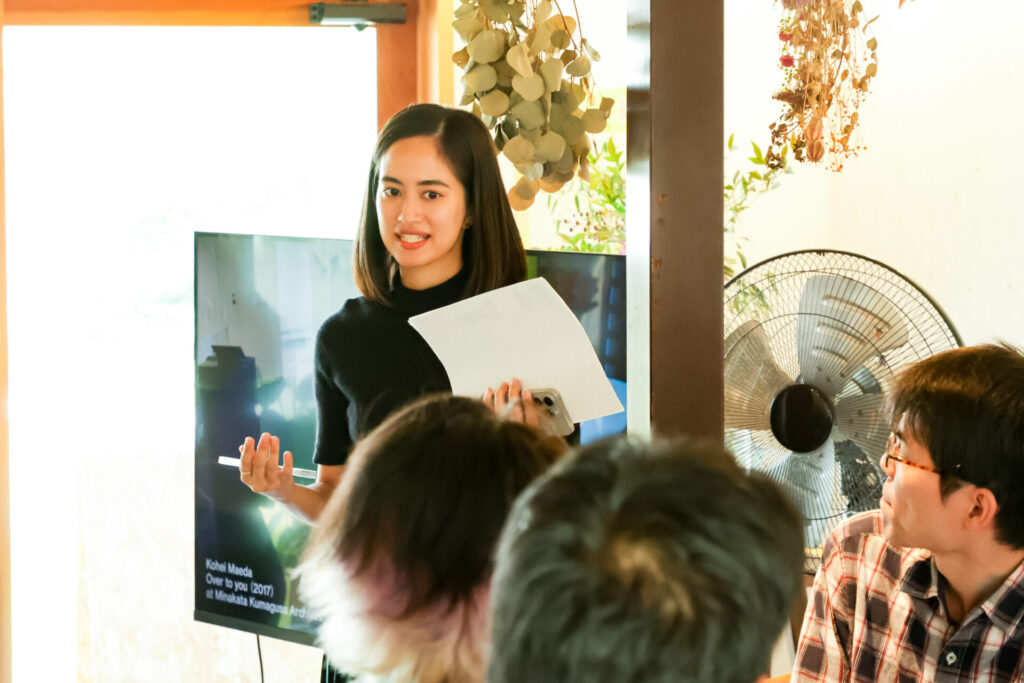

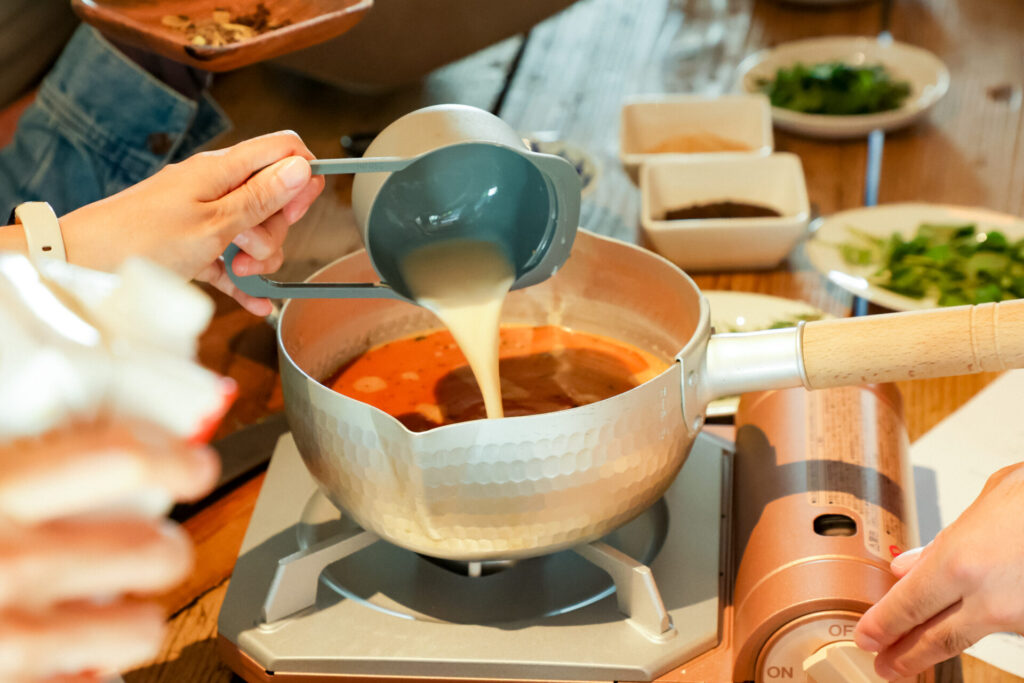
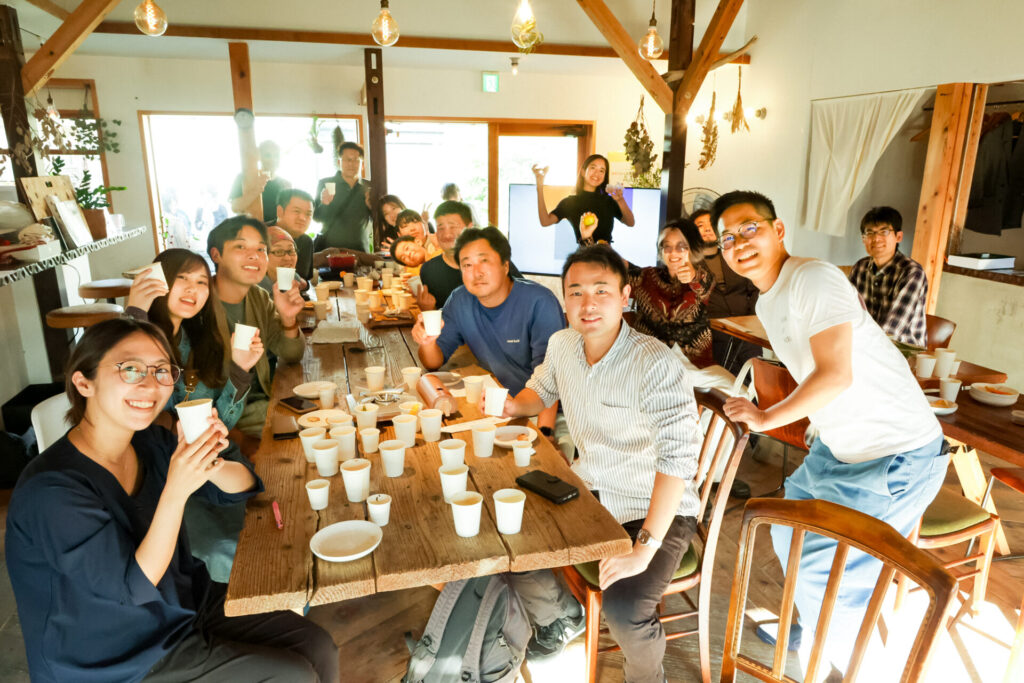
View of workshop
■Thursday 19 October.
Screening of “Le mani toccano il mondo” + Talk session + Workshop
Venue : tanabe en+
Event overview : https://kinan-art.jp/info/14103/
Koko Okano, director of the film ‘Le mani toccano il mondo’, was invited to the three-part event.
The first part of the event was a screening of the film Le mani toccano il mondo’, followed by a talk session in the second part with Ms Okano and Mr Satoshi Hirose, a contemporary artist living in Italy who has been friends with Ms Okano for some time, discussing the thoughts behind the production of the film and the Italian culture behind it.
In the third part of the workshop, ‘Hands-on Art Appreciation’, participants were blindfolded and actually touched the sculptures.
In the second half of the workshop, participants were asked to draw their own sketches of the sculptures, remembering how they felt, and most drew shapes that were the same as the real thing, with some even guessing the colours.





View of events
■Saturday 21 October.
‘Future School Lunchs’ workshop.
Venue : Akitsuno Garten
Event overview : https://kinan-art.jp/en/info/13848/
Associate Professor Kazuhiko Ota of Nanzan University, who specialises in environmental ethics and food and agricultural ethics, was invited to discuss the “future school lunches” that will be eaten 30 years from now, not only to anticipate changes in society, but also what concrete steps need to be taken now to maintain the foodstuffs that we want to leave to the future, The workshop was held to “understand the present by knowing the future”.
In the workshop, participants were divided into groups and devised a school lunch menu for one day 30 years from now, based on hypothetical future scenarios such as ‘water shortages become more serious’ or ‘school lunch has become an educational time’. In the second half of the workshop, using the backcasting method, the participants discussed what exactly would be needed to preserve that menu for the future.
For example, “In order to protect the environment in which one crop, which is also a local resource, is grown, we need people to be engaged in that industry, and we must also preserve the knowledge and technology needed to do so” Rather than thinking of a vague vision of the future, the students developed a vision that includes stakeholders and the environment as The participants experienced the resolution of the word ‘environment’ as high as possible.
Finally, a tentative future food menu was created with rice cooked in orange juice and soymeal soup. All participants ate the food while listening to a discussion on “Oranges and the future of the Kinan region” with Mr Takuo Hara, a farmer with extensive knowledge of oranges.
Thinking about the future of the region and how individuals can get involved in it. A review workshop is planned for February 2024.





View of workshop
■22 Oct (Sunday)
Sensory experience workshop ‘Try it once, try it again’.
Venue : Akitsuno Garten
Event Overview : https://kinan-art.jp/en/info/14180/
With contemporary artist Satoshi Hirose as a lecturer, the experience involved shifting the senses that we unconsciously rely on in our everyday lives a little and trying to re-capture the world through smell and touch.
The first part of the exhibition, on the theme of “Sight and Touch”, relived the production process of Hirose’s previous work, ‘Try it once, try it again’(1992), with everyone actually working with their hands to create the same piece of work. The completed works were similar in appearance but weighed completely differently, and by placing them all side by side, the participants were able to feel the ambiguity of the visual sense and the richness of other senses.
In the second part, the participants touched and smelled the leaves of several citrus fruits while blindfolded, and compared several oranges. By concentrating on the senses of smell and taste, which are sharpened when the eyesight is blocked out, and by exchanging opinions with others about what they felt, the participants were able to enjoy the rich gradation of sensations and intervals between each individual.
The day was crowded with many parents and children, and there was active communication across the boundaries between adults and children.





■ 22 Oct (Sunday).
‘Walking, Knowing and Interacting’ workshop.
Venue : Tongari Farm (Shimomaro, Tanabe City)
Event overview : https://kinan-art.jp/en/info/14377/
Aiming to create a ‘park-like farm for everyone’, the Commons Farm project, which started in 2022, shared its vision for the future and conducted a farm experience tour to deepen the image of the project.
Mr Daizo Kotani, owner of Tongari Farm and contemporary artist Satoshi Hirose as our guides, we actually visited Mr Kotani’s orange orchard and heard various stories about oranges and their cultivation.
The participants toured the farm, which is rich in early-harvested Wase variety of Unshu oranges, and were able to smell the plants and flowers, touch the soil and experience the environment around the farm with their whole bodies while eating the oranges harvested on the spot.
In the second half, the participants moved to farmland with a good view overlooking Tanabe Bay, where they were able to experience the interest and depth of the same variety, which can produce completely different products depending on the environment and cultivation methods.
It seems to be the very embodiment of one of the important elements that Commons Farm is looking for: a good landscape, It was a very meaningful day for us to be able to share our image with the participants in that wonderful landscape, and to take another step towards realising it.
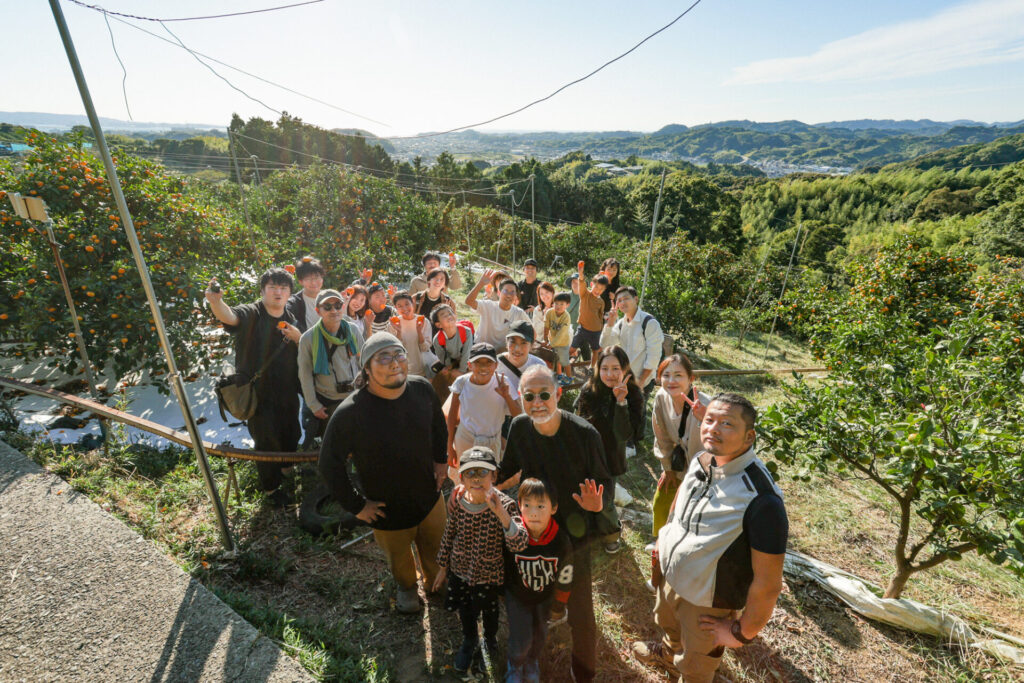






■Saturday 7 – Monday 16 October
Kinan Art Residence vol.1
Overview : https://kinan-art.jp/en/info/13742/
For Kinan Art Week’s first artist-in-residence, Kinan Art Residence vol. 1, Vietnamese artist Tuan Mami was invited to research the relationship between ‘immigration’ and ‘citrus’ from the perspective of contemporary art.
During the period, the tour started with a visit to the Mikan Festival, an annual festival at Kitsumoto Shrine, which is said to be the birthplace of oranges in Japan, followed by a visit to the farmlands of the tangerine farmers in Kinan and to the workplaces and homes of the Vietnamese people (said to number as many as 100) staying in the Kinan area as technical interns.
On the last night of their stay, they had a small party with the local community, as Mami has done all over the world, where they prepared a hot pot using Vietnamese herbs brought to the area and grown in secret.
Even though language communication is impaired, the sight of people chatting and laughing around the same pot gave me a sense of the budding seeds of a small symbiosis, as well as the strong power of Mami’s method, which does not appear to be art at first glance, but is possible because of its ability to easily transcend existing frameworks.
We will ask Mami to continue her research further and think deeply about ‘migration’ and ‘citrus’.

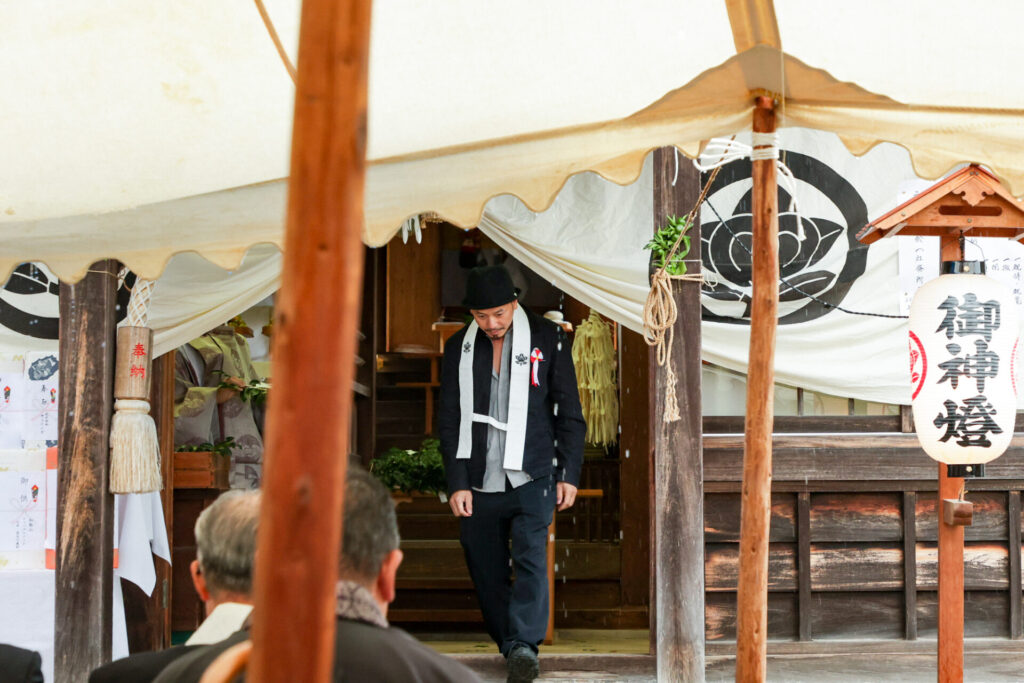

‘Mikan Festival’, an annual festival at Kitsumoto Shrine


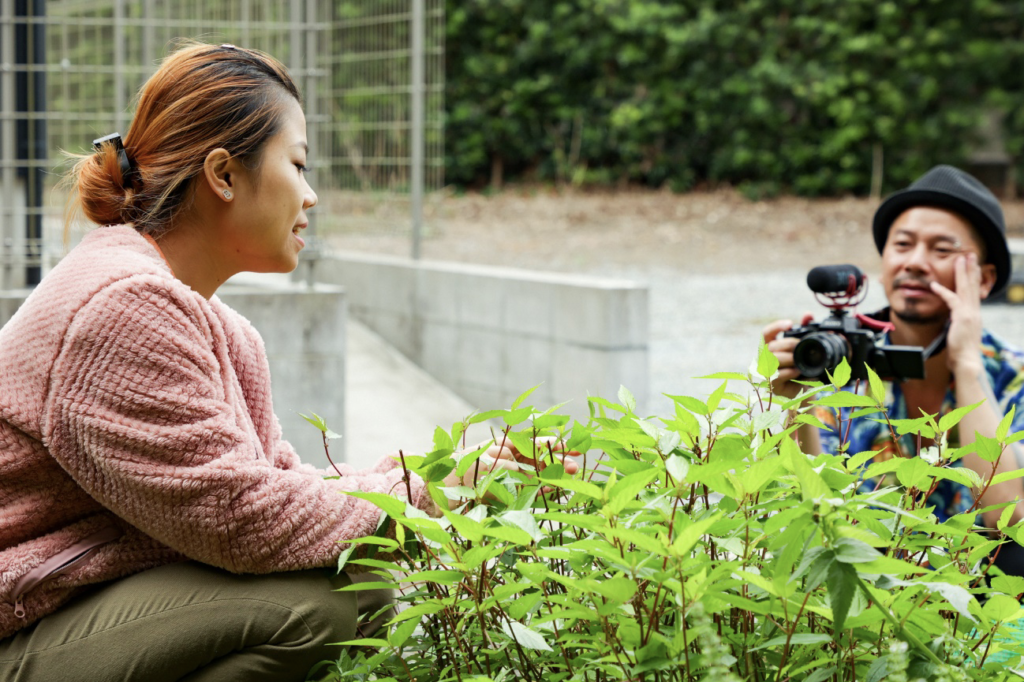
View of fieldwork
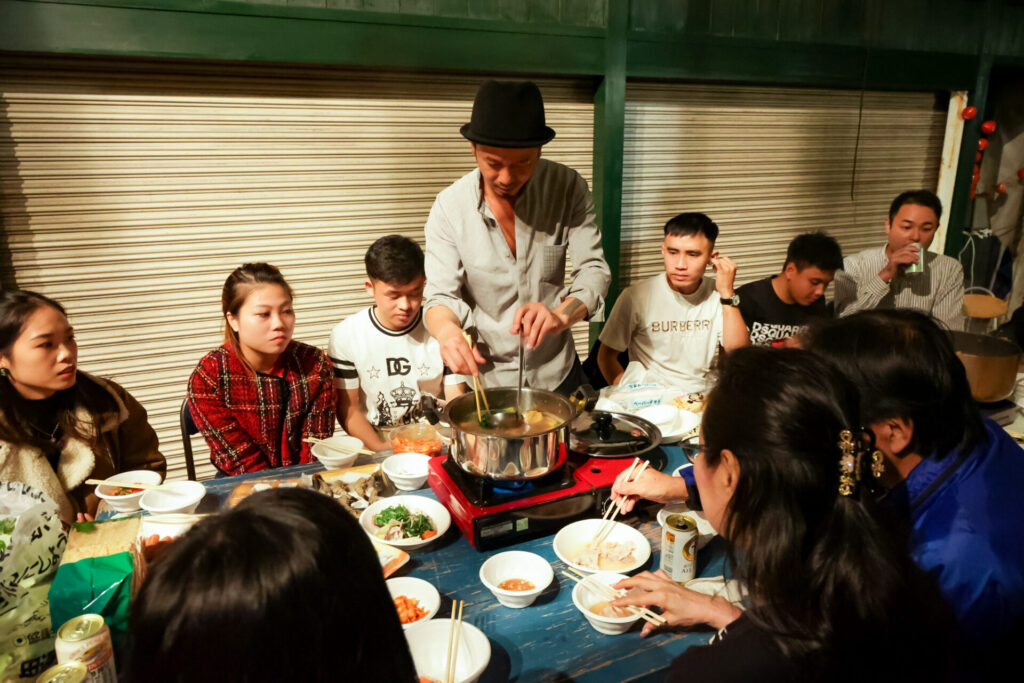
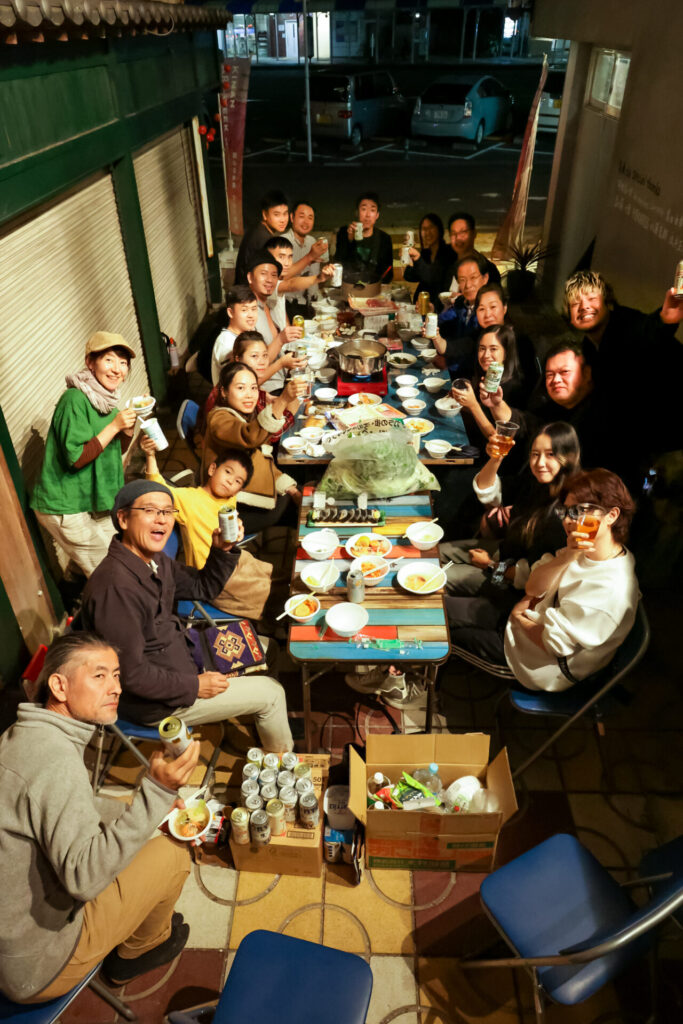
Eating vietnamese pot with various kinan people
[Report article]
Kinan Art Residence vol. 1: Kinan as cut out by Mami.
https://kinan-art.jp/en/info/15616/
All Photos by Manabu Shimoda (coamu creative)
